Related Research Articles

Sofonisba Anguissola, also known as Sophonisba Angussola or Sophonisba Anguisciola, was an Italian Renaissance painter born in Cremona to a relatively poor noble family. She received a well-rounded education that included the fine arts, and her apprenticeship with local painters set a precedent for women to be accepted as students of art. As a young woman, Anguissola traveled to Rome where she was introduced to Michelangelo, who immediately recognized her talent, and to Milan, where she painted the Duke of Alba. The Spanish queen, Elizabeth of Valois, was a keen amateur painter and in 1559 Anguissola was recruited to go to Madrid as her tutor, with the rank of lady-in-waiting. She later became an official court painter to the king, Philip II, and adapted her style to the more formal requirements of official portraits for the Spanish court. After the queen's death, Philip helped arrange an aristocratic marriage for her. She moved to Sicily, and later Pisa and Genoa, where she continued to practice as a leading portrait painter.

William Merritt Chase was an American painter, known as an exponent of Impressionism and as a teacher. He is also responsible for establishing the Chase School, which later became the Parsons School of Design.
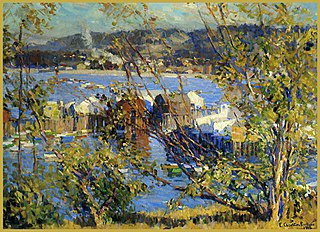
Euphemia Charlton Fortune (1885–1969) was an American Impressionist artist from California. She was trained in Europe, New York and San Francisco. She painted many portraits as well as landscape views of California and European sites. In midlife she turned to liturgical design. She signed her paintings "E. Charlton Fortune," which helped conceal her gender.

Laura Adams Armer was an American artist and writer. In 1932, her novel Waterless Mountain won the Newbery Medal. She was also an early photographer in the San Francisco Bay Area.

Madeline (Madge) McDowell Breckinridge was an American leader of the women's suffrage movement in Kentucky. She married Desha Breckinridge, editor of the Lexington Herald, which advocated women's rights, and she lived to see the women of Kentucky vote for the first time in the presidential election of 1920. She also initiated progressive reforms for compulsory school attendance and child labor. She founded many civic organizations, notably the Kentucky Association for the Prevention and Treatment of Tuberculosis, an affliction from which she had personally suffered. She led efforts to implement model schools for children and adults, parks and recreation facilities, and manual training programs.
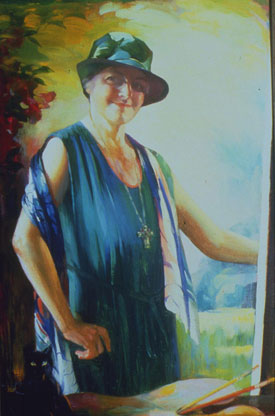
Ella Sophonisba Hergesheimer was an American illustrator, painter, and printmaker who painted and illustrated Tennessee society, including the state's women and children. As a printmaker, she pioneered the white-line woodcut.
Frances Fowler was an American painter, notable as a student of Ella Sophonisba Hergesheimer. The daughter of F.C. and Harriett (Reese) Herrick, she studied at Vanderbilt University before marrying Edward Fowler, a Columbia, Tennessee judge in 1895. After his death in 1908, she returned to Bowling Green to study with Hergesheimer. She traveled extensively throughout England and Italy to study art. She died in Bowling Green in 1943.

Dixie Selden was an American artist. She studied with Frank Duveneck, who was a mentor and significant influence, and William Merritt Chase, who introduced her to Impressionism. Selden painted portraits of Americans and made genre paintings, landscapes and seascapes from her travels within the country and to Europe, Asia, the Middle East and Mexico. She helped found and was twice the president of the Women's Art Club of Cincinnati. Her works have been exhibited in the United States. She was one of the Daughters of the American Revolution and on the Social Register.
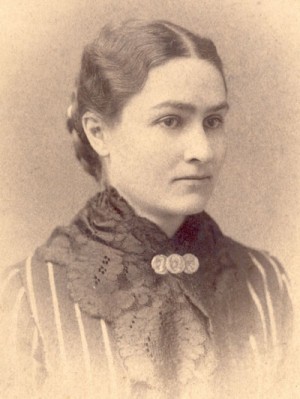
Eliza Caroline "Lida" Obenchain, was an American author, women's rights advocate, and suffragist from Bowling Green, Kentucky. Lida Obenchain, writing under the pen name Eliza Calvert Hall, was widely known early in the twentieth century for her short stories featuring an elderly widowed woman, "Aunt Jane", who plainly spoke her mind about the people she knew and her experiences in the rural south.

Patty Prather Thum was an American artist from Louisville, Kentucky known for her landscapes, paintings of roses, and book illustrations. She studied art at Vassar College and the Art Students League of New York and maintained a portrait and landscape studio in Louisville for 35 years. She taught art, illustrated books and magazines, was an inventor, served as the president of the Louisville Art League, member of the Louisville Women's Club, and was the art critic for the Louisville Herald until 1925.

Robert Wickliffe Cooper was a United States Army officer and cavalry commander of the American Civil War. He rarely used his real first name and thus appears in most documents as Wickliffe Cooper.
Jane Freeman was a British-American modernist artist whose paintings include portraits of Albert Schweitzer and Mother Cabrini. Her art is part of the collections of the University of Pennsylvania and the Springville, Utah Museum of Art.
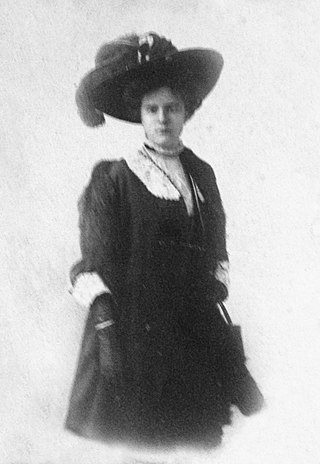
Alice Brown Chittenden was an American painter based in San Francisco, California who specialized in flowers, portraits, and landscapes. Her life's work was a collection of botanicals depicting California wildflowers, for which she is renowned and received gold and silver medals at expositions. She taught at the Mark Hopkins Institute of Art from 1897 to 1941.

Mary Evelyn McCormick was an American painter.
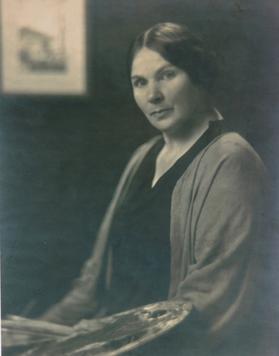
Jennie Amelia Vennerström Cannon, also known as Jennie Vennerstrom Cannon (1869–1952), was an American artist who spent most of her career in California but gained national recognition. She received the first master's degree from the Art Department at Stanford University, studied in New York with William Merritt Chase, whom she befriended and later persuaded to teach at Carmel-by-the-Sea, California, and received both the Elliott Bronze Medal and the Langdon Prize at the National Academy of Design. From her studio-homes in Berkeley and Carmel, California, her art was sent on traveling exhibitions across the United States. She was instrumental in founding the Carmel Art Association and the California League of Fine Arts in Berkeley. She championed women's equality in art communities across northern California. Her published art reviews appeared for decades in regional newspapers.

Helen Mary Knowlton was an American artist, art instructor and author. She taught in Boston from 1871 until the mid-1910s, when she was in her 70s. Her instructor and later employer, William Morris Hunt, was the subject of a portrait she made and several books; she is considered his principal biographer.
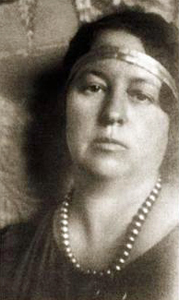
Jessie Hazel Arms Botke was an Illinois and California painter noted for her bird images and use of gold leaf highlights.
Alice Geneva "Gene" Kloss was an American artist known today primarily for her many prints of the Western landscape and ceremonies of the Pueblo people she drew entirely from memory.
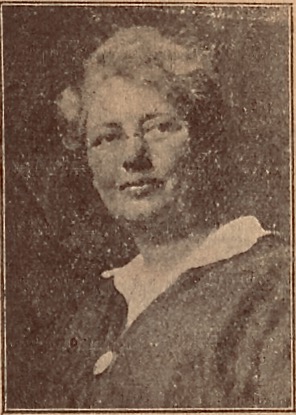
Mary DeNeale Morgan also known as M. DeNeale Morgan, was an American plein air painter, especially in watercolor, and printmaker. She was the director the Carmel Summer School of Art sponsored by the Carmel Arts and Crafts Club and a founding member of the Carmel Art Association (CAA) in Carmel-by-the-Sea, California.
Adeline Albright Wigand (1852-1944) was an American painter. She was one of the first presidents of the National Association of Women Artists. She is known for her portrait paintings.
References
- ↑ Wickliffe Cooper Covington. Died December 1, 1938. Kentucky. Vital Statistics Original Death Certificates – Microfilm (1911-1955). Microfilm rolls #7016130-7041803. Kentucky Department for Libraries and Archives, Frankfort, Kentucky.
- 1 2 3 4 "Wickliffe Cooper Covington". Kentucky Women Artists. Retrieved January 19, 2014.
- ↑ Estill Curtis Pennington. Lessons in Likeness: Portrait Painters in Kentucky and the Ohio River Valley, 1802-1920 : Featuring Works from the Filson Historical Society . University Press of Kentucky; 2011. ISBN 0-8131-2612-6. p. 164.
- ↑ Ella Sophonisba Hergesheimer. www.ifpda.org Retrieved April 25, 2014.
- ↑ American Art Annual: 28, 1931, p.495; 30, 1933, p.475.
- ↑ Kentucky at the World's Fair, St. Louis, 1904: being a report of the Commission authorized by an act of the General Assembly to the governor of the commonwealth. Kentucky Digital Library. Retrieved April 25, 2014.
- 1 2 3 Wickliffe Cooper Covington. Kentucky Women Artists. Retrieved April 25, 2014.
- ↑ Steve Shipp. American Art Colonies, 1850-1930: A Historical Guide to America's Original Art Colonies and Their Artists . Greenwood Publishing Group; 1996. ISBN 978-0-313-29619-2. p. 2.
- 1 2 Edwards, Robert W. (2012). Jennie V. Cannon: The Untold History of the Carmel and Berkeley Art Colonies, Vol. 1. Oakland, Calif.: East Bay Heritage Project. pp. 256, 264, 359, 688. ISBN 9781467545679. An online facsimile of the entire text of Vol. 1 is posted on the Traditional Fine Arts Organization website (http://www.tfaoi.com/aa/10aa/10aa557.htm).
- 1 2 3 "Portrait of Clarence Underwood McElroy, n.d." (archived webpage). Kentucky Museum. Retrieved January 19, 2014.
- ↑ Kentucky Women Artists: Slideshow. Kentucky Museum. Western Kentucky University. Retrieved April 24, 2014.
- ↑ Wickliffe (Cooper) Covington. Kentucky Women Artists. Kentucky Museum. Western Kentucky University. Retrieved April 25, 2014. (Original url was http://www.wku.edu/Library/onlinexh/kwa/covington.html)
- ↑ Lynn E. Niedermeier. Eliza Calvert Hall: Kentucky Author and Suffragist . University Press of Kentucky; January 1, 2007. ISBN 0-8131-7279-9. p. 200.
- ↑ "Gossip Going 'Round". Kentucky Leader. May 18, 1892. Retrieved April 25, 2014. "The marriage this evening of Miss Wickliffe Cooper to Mr. Robert Wells Covington, of Bowling Green, Ky., will be a very handsome affair."
- ↑ Caduceus of Kappa Sigma . 1904. p. 413.
- ↑ 1910 Warren County, Kentucky census. Thirteenth Census of the United States, 1910 (NARA microfilm publication T624, 1,178 rolls). Records of the Bureau of the Census, Record Group 29. National Archives, Washington, D.C.